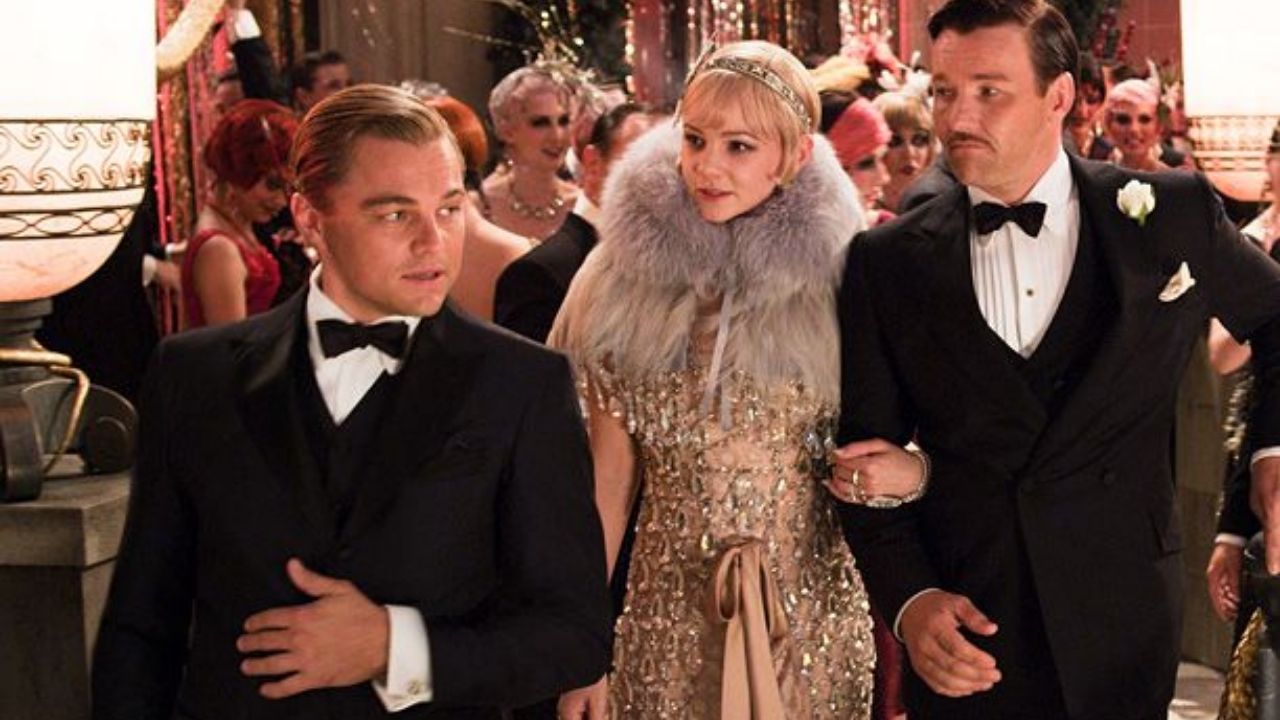Table of Contents [hide]
- 1 Introduction to Tom Buchanan
- 2 The role of wealth and privilege in shaping Tom’s character
- 3 The dynamics of Tom’s marriage with Daisy Buchanan
- 4 Tom’s affair with Myrtle Wilson and its impact on the story
- 5 Tom’s racism and its portrayal in the novel
- 6 The symbolism of Tom’s physical presence and actions
- 7 Conclusion: Understanding the complexities of Tom Buchanan
Introduction to Tom Buchanan
Step into the opulent world of West Egg and meet one of literature’s most complex antagonists: Tom Buchanan. With his commanding presence, undeniable wealth, and a penchant for stirring up trouble, Tom Buchanan is a character that leaves an indelible mark on F. Scott Fitzgerald’s iconic novel, “The Great Gatsby.” In this blog post, we will delve deep into the enigmatic persona of Tom Buchanan, exploring the role of wealth and privilege in shaping his character, dissecting the dynamics of his tumultuous marriage with Daisy Buchanan, unraveling the impact of his affair with Myrtle Wilson on the story’s narrative thread, examining his unsettling racism as portrayed in the book, and uncovering the symbolism behind Tom’s physical presence and actions. Prepare to peel back layers upon layers as we embark on a journey to decipher the complexities surrounding this captivating literary figure. So grab your champagne flute and join us as we explore every facet of Tom Buchanan’s intriguing existence!
The role of wealth and privilege in shaping Tom’s character
When it comes to understanding Tom Buchanan, one cannot ignore the significant role that wealth and privilege play in shaping his character. Born into a wealthy family, Tom has always been accustomed to a life of luxury and entitlement. This upbringing has undoubtedly influenced his attitudes and actions throughout the novel.
Growing up with money allows Tom to view himself as superior to others. He believes that his wealth gives him the right to exert control over those around him, particularly when it comes to women like Daisy. His privileged status affords him certain freedoms and opportunities that others can only dream of.
This sense of entitlement is evident in how he treats both Daisy and Myrtle Wilson. Tom sees them as objects to possess rather than individuals with their own desires and agency. He believes he can have affairs without consequence because he possesses the power that comes with wealth.
Furthermore, his wealth also shields him from facing real consequences for his actions. While Gatsby ultimately pays the ultimate price for his love for Daisy, Tom remains largely unscathed by his affair with Myrtle or any other immoral behavior he engages in throughout the story.
In this way, we see how wealth not only shapes Tom’s character but also enables him to perpetuate a cycle of privilege and entitlement. It becomes clear that without these privileges afforded by money, Tom’s actions would likely be met with much harsher judgment and repercussions.
So next time you delve into “The Great Gatsby,” take a moment to consider just how integral wealth and privilege are in shaping the complex antagonist that is Tom Buchanan
The dynamics of Tom’s marriage with Daisy Buchanan
The dynamics of Tom’s marriage with Daisy Buchanan are complex and multi-faceted. On the surface, they appear to be a glamorous couple, living in opulence and surrounded by wealth. However, beneath this facade lies a marriage built on shaky foundations.
Tom and Daisy’s relationship is characterized by infidelity, indifference, and a lack of genuine connection. While Tom engages in numerous extramarital affairs, including one with Myrtle Wilson, Daisy remains complicit in his actions. This suggests that their marriage is more about appearances and societal expectations than true love or emotional intimacy.
Furthermore, the power dynamics within their relationship are skewed heavily in Tom’s favor. His wealth and privilege give him a sense of entitlement that allows him to control and dominate Daisy. She becomes trapped in a gilded cage, unable to escape the confines of her marriage or pursue her own desires.
Despite these flaws in their relationship, there are moments when it becomes clear that Tom does care for Daisy on some level. He expresses jealousy when Gatsby enters the picture and shows flashes of protectiveness towards her. However, these glimpses of affection are fleeting at best.
The portrayal of Tom and Daisy’s marriage serves as a commentary on the emptiness that can come from pursuing material wealth at the expense of genuine human connection. It highlights how superficial relationships fueled by societal expectations ultimately lead to dissatisfaction and unhappiness.
Tom’s affair with Myrtle Wilson and its impact on the story
Tom’s affair with Myrtle Wilson, a working-class woman from the Valley of Ashes, plays a crucial role in shaping the narrative of “The Great Gatsby.” Their tumultuous relationship not only adds intrigue and drama to the story but also highlights themes of social class and moral decay.
From the moment we are introduced to Tom’s mistress, it becomes clear that their affair is fueled by his desire for power and dominance. Myrtle becomes an escape for Tom—an opportunity to indulge in his primal desires without any consequences. However, this illicit relationship ultimately leads to tragic consequences for all involved.
Through his affair with Myrtle, Tom reveals himself as a man who lacks loyalty and integrity. He uses her as a means to satisfy his own needs while disregarding both Daisy’s feelings and societal expectations. This betrayal not only deepens the divide between him and Daisy but also exposes the hollowness of their marriage.
Furthermore, Tom’s involvement with Myrtle further exemplifies how wealth and privilege allow him to wield influence over others’ lives without facing repercussions. His ability to maintain two separate lives—one built on respectability with Daisy and another filled with debauchery—illustrates the stark contrast between those who have money and those who do not.
Additionally, Tom’s affair contributes significantly to Gatsby’s downfall. When George Wilson discovers his wife’s infidelity, he becomes consumed by grief which eventually drives him towards seeking revenge against whoever was responsible for destroying his life. Tragically mistaken about Gatsby’s identity as her lover due to manipulated information provided by Tom Buchanan , George kills Gatsby before taking his own life—a heartbreaking end result born out of this tangled web of deceit.
Tom’s racism and its portrayal in the novel
Tom Buchanan’s racism is a notable aspect of his character in “The Great Gatsby,” shedding light on the prevailing attitudes of the time. Fitzgerald portrays Tom as an embodiment of the inherent prejudice and entitlement that came with his wealth and privilege.
Throughout the novel, Tom openly expresses racist views, displaying a sense of superiority over people of different races. His disdain for individuals like Meyer Wolfsheim, who is Jewish, reinforces this attitude. This portrayal highlights how those in positions of power often used their status to perpetuate discriminatory beliefs.
Furthermore, Tom’s racism intersects with his relationship with Myrtle Wilson, whom he has an affair with. Despite being involved with her and benefiting from her presence when it suits him, he ultimately treats Myrtle as disposable due to both her gender and socio-economic background.
Fitzgerald challenges readers to confront these uncomfortable truths about society during the Jazz Age by presenting them through Tom’s character. By doing so, he emphasizes the pervasive nature of racism at that time and its impact on relationships and social dynamics.
Tom Buchanan serves as a complex antagonist whose racist behavior adds depth to his already flawed personality. It also serves as a reminder that even characters we may sympathize with can possess deeply ingrained prejudices that shape their actions impacting not only themselves but also those around them.
The symbolism of Tom’s physical presence and actions
Tom Buchanan’s physical presence and actions in ‘The Great Gatsby’ are laden with symbolism, painting a vivid picture of his character. From the very first introduction, it becomes apparent that Tom exudes power and dominance. His muscular build and imposing stature reflect his privileged upbringing and the sense of entitlement he carries with him.
Tom’s physicality is also reflected in his aggressive behavior. Whether it be his violent outbursts or his forceful mannerisms, Tom’s actions speak volumes about his personality. He asserts himself with an air of superiority, using intimidation to maintain control over those around him.
Furthermore, Tom’s infidelity serves as a symbol of his disregard for societal norms and moral boundaries. His affair with Myrtle Wilson represents not only a betrayal of his own marriage but also a reflection of the hedonistic lifestyle embraced by the wealthy elite during the Jazz Age.
In addition to these symbolic elements, Tom’s racial prejudice adds another layer to understanding his character. His racist comments reveal not only ignorance but also highlight how wealth and privilege can breed arrogance and discrimination.
Through both physical presence and actions, F. Scott Fitzgerald masterfully uses symbolism to portray the complex nature of Tom Buchanan as an antagonist in ‘The Great Gatsby’. It is through these symbols that readers gain insight into some of the darker aspects of wealth, privilege, power dynamics within relationships, moral decay,and social prejudices prevalent during this era.
Conclusion: Understanding the complexities of Tom Buchanan
In exploring the character of Tom Buchanan in F. Scott Fitzgerald’s iconic novel, “The Great Gatsby,” it becomes clear that he is a multifaceted and enigmatic antagonist. From his role as a symbol of wealth and privilege to his troubled marriage with Daisy, from his affair with Myrtle Wilson to his racist views, Tom embodies numerous layers that contribute to the complexity of his character.
Tom’s immense wealth and social status greatly shape who he is. As an old-money aristocrat, he exudes power and arrogance, using his position to assert dominance over others. His entitlement is evident throughout the story; however, beneath this façade lie insecurities and a fear of losing what he believes defines him – money and influence.
The dynamics between Tom and Daisy are equally intriguing. Their marriage appears glamorous on the surface but harbors deep cracks beneath it. Despite their shared history, they seem disconnected emotionally; their relationship lacks true intimacy. This void leads both characters towards infidelity – Daisy seeks solace in her affair with Jay Gatsby while Tom engages in an illicit relationship with Myrtle Wilson.
Tom’s involvement with Myrtle has significant consequences for all parties involved. Through this affair, we see another side of him – one driven by desire and recklessness rather than societal expectations or marital obligations. The tragedy that unfolds as a result highlights not only the destructive nature of adultery but also exposes vulnerabilities within Tom himself.
Another noteworthy aspect about Tom is his racial prejudice, which Fitzgerald subtly portrays throughout the novel. In conversations about race at various points in the story, it becomes apparent that he holds discriminatory beliefs without hesitation or remorse. This serves as yet another layer to explore when deciphering this complex character.
Symbolism plays a crucial role in understanding Tom’s character as well – particularly through physical presence and actions associated with him throughout the narrative: from towering stature representing dominance to aggressive behavior reflecting his need for control. These symbolic representations further emphasize the complexity of Tom as a character.
In conclusion, Tom Buchanan is a multifaceted and complex character whose layers and complexities continue to intrigue readers. His role as a symbol of wealth, his troubled marriage with Daisy, his affair with Myrtle Wilson, his racial prejudice, and the symbolism associated with him all contribute to the intricacies of his character. Through Tom’s actions and beliefs, Fitzgerald successfully captures the essence of the wealthy elite in 1920s America while also providing insight into the human condition – its flaws, insecurities, and vulnerabilities.







